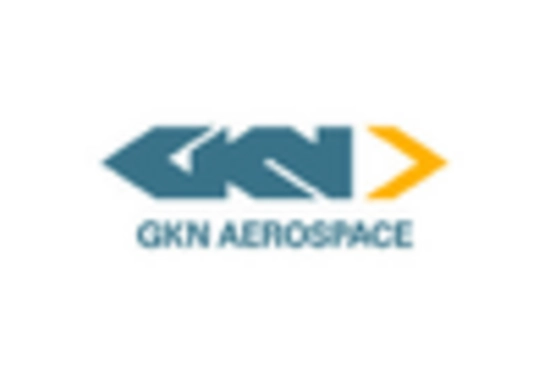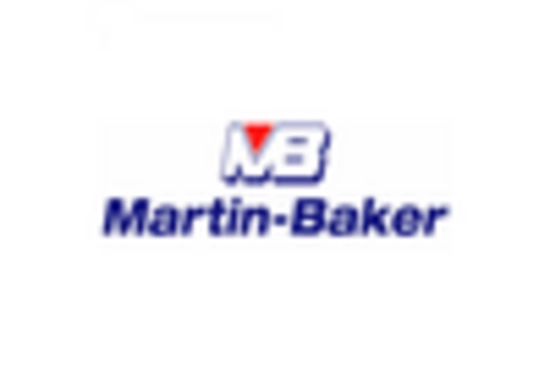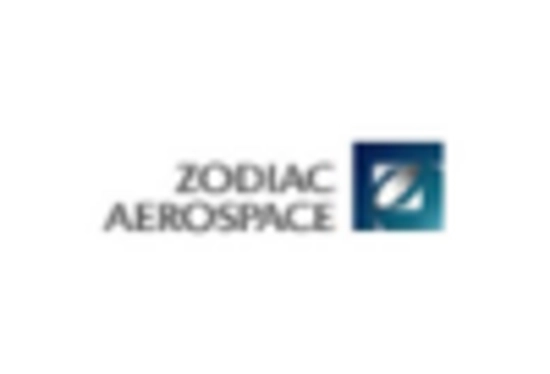Expansion of the Aviation Sector
The Aircraft Evacuation Equipment Market is poised for growth due to the expansion of the aviation sector, particularly in emerging markets. As air travel becomes more accessible, the number of aircraft in operation is increasing, necessitating the need for effective evacuation systems. This expansion is driving demand for advanced evacuation equipment that can accommodate larger passenger capacities and ensure swift evacuations. The market is likely to benefit from the rising number of low-cost carriers and regional airlines, which are entering the market and require compliant evacuation solutions. This trend indicates a robust growth potential for the Aircraft Evacuation Equipment Market as the aviation sector continues to evolve.
Growing Awareness of Passenger Safety
The Aircraft Evacuation Equipment Market is witnessing a surge in demand driven by the growing awareness of passenger safety among airlines and regulatory bodies. As incidents of aviation emergencies, although rare, continue to garner media attention, there is an increasing pressure on airlines to ensure that their evacuation systems are up to date and effective. This heightened awareness is prompting airlines to invest in modern evacuation equipment that meets the latest safety standards. Consequently, the market is expected to expand as airlines prioritize passenger safety and seek to enhance their emergency preparedness protocols. The emphasis on safety is likely to lead to innovations in evacuation technologies, further shaping the Aircraft Evacuation Equipment Market.
Regulatory Compliance and Safety Standards
The Aircraft Evacuation Equipment Market is significantly influenced by stringent regulatory compliance and safety standards imposed by aviation authorities. These regulations mandate that aircraft manufacturers equip their fleets with state-of-the-art evacuation systems that meet specific safety criteria. As a result, there is a growing emphasis on the development and implementation of advanced evacuation technologies. The market is expected to witness a surge in demand as airlines and manufacturers strive to comply with these regulations, which are designed to enhance passenger safety. The increasing focus on safety protocols is likely to drive investments in research and development, further propelling the growth of the Aircraft Evacuation Equipment Market.
Increased Investment in Safety Infrastructure
The Aircraft Evacuation Equipment Market is benefiting from increased investment in safety infrastructure across the aviation sector. Airlines and manufacturers are allocating substantial resources to enhance their safety measures, which includes upgrading evacuation equipment. This trend is particularly evident in regions where air travel is expanding rapidly, leading to a heightened focus on passenger safety. The market is projected to grow as stakeholders recognize the importance of robust evacuation systems in ensuring the safety of passengers and crew. Additionally, the rising number of aircraft deliveries is likely to contribute to the demand for advanced evacuation equipment, further solidifying the market's growth trajectory.
Technological Advancements in Aircraft Evacuation Equipment
The Aircraft Evacuation Equipment Market is experiencing a notable transformation due to rapid technological advancements. Innovations such as automated evacuation systems and enhanced inflatable slides are being integrated into modern aircraft designs. These advancements not only improve the efficiency of evacuation procedures but also enhance passenger safety during emergencies. The market is projected to grow at a compound annual growth rate of approximately 5.2% over the next few years, driven by the increasing demand for advanced safety features. Furthermore, the incorporation of smart technologies, such as real-time monitoring systems, is likely to revolutionize the way evacuation equipment is deployed, ensuring a more streamlined and effective response in critical situations.

















Leave a Comment